
VNU Journal of Science: Earth and Environmental Sciences, Vol. 39, No. 4 (2023) 42-50
42
Original Article
Effects of Silica-Biochar, Bentonite and Diatomite Ratios
on Properties of Controlled Release Fertilizer
Nguyen Xuan Huan1,*, Nguyen Ngoc Minh1, Tran Minh Tien2
1VNU University of Science, 334 Nguyen Trai, Thanh Xuan, Hanoi, Vietnam
2Soils and Fertilizers Research Institute, Duc Thang North Tu Liem, Hanoi, Vietnam
Received 18 August 2023
Revised 04 October 2023; Accepted 07 December 2023
Abstract: Controlled slow release fertilizer (CRF) in this study was produced by mixing Silica-
Biochar (SB), Bentonite (B), and Diatomite (D) at different ratios with N, P, K form customized
crystal membrane to control the dissolution of N, P, K into water. Research results show that the
mixing rate of SB and B significantly affects the pelleting process, decay rate, hardness, and air
hygroscopicity of CRF fertilizer. The decay rate is more than 20% after 13 and 5 days and greater
than 80% after 17 and 9 days, respectively with SB mixing ratio of 30 and 40%. The maximum
hardness of CRF fertilizer was 3.2 kg/cm2 and the smallest was 1.6 kg/cm2 respectively with the SB
used ratio of 30 and 40%. With the mixing rate of SB at 30%, the resulting CRF fertilizer has the
smallest hygroscopicity. With the mixing rate of B at 5%, the resulting decay rate of CRF was the
smallest. The mixing rate of B did not affect the air hygroscopicity of CRF fertilizers. The different
mixing rates of diatomite used did not affect the decay rate, hardness, and air hygroscopicity of CRF
fertilizers.
Keywords: Silica-Biochar, Bentonite, Diatomite, Fertilizer, Slow release.*
________
* Corresponding author.
E-mail address: huannx@hus.edu.vn
https://doi.org/10.25073/2588-1094/vnuees.4982

N. X. Huan et al. / VNU Journal of Science: Earth and Environmental Sciences, Vol. 39, No. 4 (2023) 42-50
43
Ảnh hưởng của tỷ lệ Silica-Biochar, Bentonit
và Diatomit đến một số tính chất của phân bón đa lượng
chậm tan có kiểm soát
Nguyễn Xuân Huân1,*, Nguyễn Ngọc Minh1, Trần Minh Tiến2
1Trường Đại học Khoa học Tự nhiên, Đại học Quốc gia Hà Nội,
334 nguyễn Trãi, Thanh Xuân, Hà Nội, Việt Nam
2Viện Thổ nhưỡng Nông hóa, Đức Thắng, Bắc Từ Liêm, Hà Nội, Việt Nam
Nhận ngày 18 tháng 8 năm 2023
Chỉnh sửa ngày 04 tháng 10 năm 2023; Chấp nhận đăng ngày 07 tháng 12 năm 2023
Tóm tắt: Phân bón chậm tan có kiểm soát (CRF) trong nghiên cứu này được sản xuất bằng cách
phối trộn hỗn hợp Silica-Biochar (SB), Bentonit (B) và Diatomit (D) tại các tỷ lệ khác nhau với phân
bón đa lượng N, P, K tạo thành màng tinh thể tuỳ biến để kiểm soát quá trình hoà tan N, P, K vào
nước. Kết quả nghiên cứu cho thấy tỷ lệ SB và B sử dụng ảnh hưởng đáng kể đến quá trình tạo viên,
tốc độ phân rã, độ cứng và độ hút ẩm không khí của phân CRF. Tốc độ phân rã > 20 % sau 13 và 5
ngày và đạt > 80% sau 17 và 9 ngày tương ứng với tỷ lệ SB sử dụng là 30 và 40%. Độ cứng của
phân CRF đạt giá trị lớn nhất (3,2 kg/cm2) khi sử dụng 30% SB và đạt giá trị nhỏ nhất (1,6 kg/cm2)
khi sử dụng SB đến 40%. Tỷ lệ SB sử dụng là 30% cho độ hút ẩm nhỏ nhất. Tỷ lệ B sử dụng là 5%
thì tốc độ phân rã của CRF là nhỏ nhất. Tỷ lệ % B sử dụng không làm ảnh hưởng nhiều đến độ hút
ẩm không khí của phân CRF. Các tỷ lệ % diatomit sử dụng khác nhau không làm ảnh hưởng nhiều
đến tốc độ phân rã, độ cứng, độ hút ẩm không khí của phân CRF.
Từ khóa: Silica-Biochar, Bentonit, Diatomit, phân bón, chậm tan.
1. Mở đầu*
Phân bón nhả chậm có kiểm soát (Controlled
Release Fertilizer, CRF) được cộng đồng khoa
học và Hiệp hội Phân bón quốc tế (IFA) xác nhận
là một trong bốn hướng phát triển các loại phân
bón mới có hiệu suất cao, tiết kiệm tài nguyên và
giảm thiểu các tác động môi trường. Trên thế
giới có rất nhiều các sản phẩm CRF được phát
triển nhưng phổ biến nhất là các dạng CRF được
phủ bọc bởi các polyme khác nhau. Việc sử dụng
màng polyme để kiểm soát mức độ nhả của phân
CRF bộc lộ một số nhược điểm là: thiếu tính linh
hoạt, nhả không đúng thời điểm và không đúng
________
* Tác giả liên hệ.
Địa chỉ email: huannx@hus.edu.vn
https://doi.org/10.25073/2588-1094/vnuees.4982
lượng theo nhu cầu của cây, có thể bị vô hiệu hóa
năng lực nhả có kiểm soát trong môi trường đất
với sự phức tạp của rất nhiều yếu tố lý hóa học
đất và đưa một lượng đáng kể polyme vào đất
gây ảnh hưởng nhất định đến sức khoẻ của đất
[1]. Vì vậy, Nguyễn Xuân Huân và nnk (2023),
đã sử dụng hỗn hợp các nguyên liệu gồm Silica-
Biochar được phân tách từ rơm rạ với bentonit
và diatomit ở các tỷ lệ phối trộn khác nhau để tạo
màng tinh thể tuỳ biến có cơ chế đóng mở
khoảng hổng giúp kiểm soát tốt hơn khả năng
nhả dinh dưỡng của phân và hạn chế tối đa việc
sử dụng màng polyme [2]. Tuy nhiên việc thay
đổi tỷ lệ của các vật liệu trên ảnh hưởng như thế

N. X. Huan et al. / VNU Journal of Science: Earth and Environmental Sciences, Vol. 39, No. 4 (2023) 42-50
44
nào đến một số tính chất của phân CRF như tốc
độ phân rã, độ cứng và độ hút ẩm của phân được
đặt ra ở nghiên cứu này. Vì các tính chất này
cũng liên quan mật thiết với tốc độ nhả dinh
dưỡng của phân CRF.
Rơm rạ là nguồn phụ phẩm nông nghiệp dồi
dào và có thể tận dụng để sản xuất phân chậm
tan thông minh [3]. Bản chất rơm rạ là một dạng
composite tự nhiên với 2 hợp phần cơ bản là
Lignocellulose và Silica - SLC (Hình 1) và
composite này sẽ trở nên giá trị hơn khi được
biochar hóa (nhiệt phân) để trở thành composite
Silica - Biochar (SB). Do rơm rạ chứa rất nhiều
các chất dinh dưỡng (N, P, K, Si,…) nên sau khi
hình thành SB, bản thân dạng composite này trở
thành 1 dạng phân chậm tan có kiểm soát và có
thể tùy biến tốc độ nhả. Nguyen (2021) [3] cho
rằng: SB có 2 thành phần với 2 chức năng riêng
biệt trong đó biochar với cấu trúc xốp rỗng cung
cấp không gian chứa khoáng chất dinh dưỡng,
silica có tốc độ hòa tan nhanh hơn sẽ hình thành
các "cửa sổ" dẫn truyền và giải phóng phân.
Hình 1. Hình ảnh chụp cắt lớp vật liệu SLC
từ rơm rạ [3].
Nghiên cứu của Nguyen và cs (2015) [4] cho
thấy, nếu các bon hữu cơ bị "bắt giữ" bởi khung
silica thì điều tương tự cũng sẽ diễn ra đối với
NPK và nhiều nguyên tố hóa học khác. Khi NPK
khu trú ở một bộ phận nào đó, nếu quá trình tạo
khung silica diễn ra mạnh, NPK có thể bị "nhốt"
vào cấu trúc khung silica được hình thành. Với
cơ chế trên, SB có thể phối trộn với phân thương
phẩm để tạo ra các CRF có khả năng tùy biến tốc
độ nhả phân. Tuy nhiên, khả năng kết dính thấp
và cấu trúc vi mao quản kém đồng nhất là những
nhược điểm của composite SB để tạo ra những
thương phẩm CRF có chất lượng và năng lực
hoạt động như mong muốn. Vì vậy, cần có sự bổ
trợ thêm các hoạt chất kết dính và tăng cường
năng lực dẫn truyền phân. Các khoáng vật tự
nhiên như diatomit và bentonit là những vật liệu
đặc biệt phù hợp cho mục đích này.
Hình 2. Mô tả cấu trúc CRF trên nền vật liệu SB và
cơ chế phân hủy, giải phóng phân NPK từ CRF [2].
Sử dụng diatomit có các đặc tính vật lý độc
đáo như độ thấm và độ xốp cao (35-65%) [5],
kích thước hạt nhỏ, độ dẫn nhiệt và mật độ thấp
[6] và diện tích bề mặt cao [7]. Các tính chất của
bề mặt diatomite như: độ hòa tan, điện tích, độ
axit, khả năng trao đổi và hấp phụ ion, bị chi phối
rất nhiều bởi sự hiện diện của nước, được kết nối
một phần cấu trúc với lưới tinh thể của diatomite,
tạo thành các nhóm hydroxyl hoạt động trên đó
[8]. Với đặc tính như trên, diatomit đóng vai trò
cấu trúc khung với hệ vi mao quản lớn để tạo các
kênh dẫn truyền cho phép nước và phân NPK
hòa tan đi qua kênh (Hình 3).
Hình 3. Diatomit với với hệ vi mao quản lớn tạo
các kênh dẫn [2].

N. X. Huan et al. / VNU Journal of Science: Earth and Environmental Sciences, Vol. 39, No. 4 (2023) 42-50
45
Màng tinh thể tùy biến kích thước vi mao
quản được phát triển dựa trên việc phối trộn giữa
2 loại khoáng vật tự nhiên là diatomite và
bentonit kết hợp với SB. Diatomit có hệ vi mao
quản lớn để tạo các kênh dẫn truyền cho phép
nước và phân NPK hòa tan đi qua. Bentonit có
kích thước nhỏ nên có thể xâm nhập vào hệ vi
mao quản của diatomit để tạo thành các “chướng
ngại vật” có khả năng bịt các kênh dẫn của
diatomit, ngăn chặn dòng di chuyển của nước và
phân NPK. Bentonit có tính chất co trương ở các
mức độ khác nhau do đó tác dụng sẽ kiểm soát độ
mở của các kênh dẫn và khả năng nhả phân NPK.
2. Nguyên liệu và phương pháp
2.1. Nguyên liệu
Phân NPK: phân NPK được nghiền nhỏ
0,5 mm và phối trộn từ phân urê (NH2)2CO
(46,3% N) với phân DAP 18-46 (18% N và 46%
P2O5) và phân Kali clorua (60% K2Ohh) theo tỷ
lệ (% về khối lượng) giữa urê: DAP: KCl là
1,30:1,45:1.
Rơm để phân tách tạo SB: rơm được phơi
khô, cắt nhỏ (~3 cm), sấy khô ở nhiệt độ 70 oC,
nghiền nhỏ hơn 0,5 mm và đốt yếm khí ở 600 oC
trong thời gian 1 giờ để thu được SB. Thành phần
SB có đặc tính hoá lý cơ bản như hàm lượng Si,
Mg, P, K, Ca và As tương ứng là 30,567; 10,708;
12,934; 30,569; 31,274 và 0,032 mg g−1 khi chiết
rút bằng nước cường thuỷ.
Chất kết dính và nước (có nồng độ 10% chất
kết dính): chất kết dính được lựa chọn là polymer
nguồn gốc tự nhiên (tinh bột và polysaccharide từ
sinh vật biển) và các sản phẩm biến tính của nó với
các nhóm chức phosphate/sulfonate/carbonate/NH2
hoặc lignin đã được phối trộn với PVA, PLA với
tỉ lệ phù hợp. Chất kết dính này đảm bảo: i) Có
độ ưa nước/kị nước phù hợp cho phép có ái lực
tốt với cả phân khoáng NPK (ưa nước) và SLC
(kị nước/tương đối kị nước); và ii) giàu các nhóm
chức –OH/PO43-/SO32-/CO32-/NH2 giúp cho việc
lưu giữ K+ cũng như “trả lời” khi tín hiệu thay
đổi pH từ môi trường được phát đi. Nhằm làm
tăng độ kết dính (lưu giữ) SLC và NPK (đặc biệt
là urea) trong chất nền.
Diatomit: Diatomit lấy từ Tuy Hòa, Phú Yên
được phơi khô và nghiền nhỏ 0,5 mm.
Diatomit có dung tích trao đổi cation (CEC) là
30 cmolc.kg-1 và có phản ứng axit yếu (pHKCl =
5,2), kích thước > 20 µm ~ 75%, kích thước sét
(< 2 µm) ~ 14%.
Bentonit: Bentonite lấy từ Di Linh, Lâm
Đồng được phơi khô và nghiền nhỏ 0,5 mm,
có pHKCl: 6,4 và hàm lượng chất hữu cơ 1,9%,
khả năng trao đổi cation (144 me 100 g-1), hàm
lượng sét (< 2 µm) (6,7%), cấp hạt có kích thước
2-6,3 µm chiếm 14,6%, cấp hạt 6,3-20 µm chiếm
17,2% và cấp hạt > 20 µm chiếm đến 61,4%.
2.2. Phương pháp nghiên cứu
2.2.1. Phương pháp tạo viên CRF
- Thành phần nguyên liệu tổng hợp viên CRF
để khảo sát ảnh hưởng của của tỷ lệ SB sử dụng
đến một số tính chất của phân CRFSB được thể
hiện ở Bảng 1.
Bảng 1. Thành phần nguyên liệu tổng hợp viên CRFSB (% khối lượng)
STT
Ký hiệu mẫu
Phân NPK
Silica-Biochar
(SB)
Chất kết dính
và nước
Diatomit
Bentonit
1
CRF1
70
10
10
5
5
2
CRF2
60
20
10
5
5
3
CRF3
50
30
10
5
5
4
CRF4
40
40
10
5
5
5
CRF5
30
50
10
5
5
- Thành phần nguyên liệu tổng hợp viên CRF
để khảo sát ảnh hưởng của của tỷ lệ bentonit sử
dụng đến một số tính chất của phân CRFB được
thể hiện ở Bảng 2.

N. X. Huan et al. / VNU Journal of Science: Earth and Environmental Sciences, Vol. 39, No. 4 (2023) 42-50
46
Bảng 2. Thành phần nguyên liệu tổng hợp viên CRFB (% khối lượng)
STT
Ký hiệu mẫu
Phân NPK
Silica-Biochar
(SB)
Chất kết dính
và nước
Diatomit
Bentonit
1
CRF6
52
30
10
5
3
2
CRF7
50
30
10
5
5
3
CRF8
48
30
10
5
7
4
CRF9
46
30
10
5
9
5
CRF10
44
30
10
5
11
6
CRF11
42
40
10
5
3
7
CRF12
40
40
10
5
5
8
CRF13
38
40
10
5
7
9
CRF14
36
40
10
5
9
10
CRF15
34
40
10
5
11
- Thành phần nguyên liệu tổng hợp viên CRF
để khảo sát ảnh hưởng của của tỷ lệ diatomit sử
dụng đến một số tính chất của phân CRFD được
thể hiện ở Bảng 3.
Hỗn hợp phân NPK, tro từ rơm chứa SB,
diatomit và bentonit theo các tỷ lệ % khối lượng
tại các Bảng 1, 2 và 3 được trộn đều bằng máy.
Lấy 50% lượng hỗn hợp trên đưa vào chảo vê
viên, dùng bình phun chứa chất kết dính phun
đều vào hỗn hợp trên. Lúc này điều chỉnh chảo
vê viên ở tốc độ quay 30 vòng/phút trong thời
gian khoảng 20 phút. Điều chỉnh tốc độ quay của
chảo vê viên lên 35 vòng/phút, sau đó tiếp tục
vừa vê viên vừa phun chất kết dính và bổ sung
dần dần 50% hỗn hợp nguyên liệu còn lại cho
đến hết. Viên CRF tạo ra phải có kích thước từ
8-10 mm. Khi quá trình tạo viên đã được hoàn
thành tiến hành điều chỉnh tốc độ quay của chảo
vê viên lên 40 vòng/phút trong thời gian 20 phút
để viên được tròn đều và nhẵn bóng hơn.
Bảng 3. Thành phần nguyên liệu tổng hợp viên CRFD (% khối lượng)
STT
Ký hiệu mẫu
Phân NPK
Silica-Biochar
(SB)
Chất kết dính và
nước
Diatomit
Bentonit
1
CRF16
54
30
10
1
5
2
CRF17
52
30
10
3
5
3
CRF18
50
30
10
5
5
4
CRF19
48
30
10
7
5
5
CRF20
46
30
10
9
5
6
CRF21
44
40
10
1
5
7
CRF22
42
40
10
3
5
8
CRF23
40
40
10
5
5
9
CRF24
38
40
10
7
5
10
CRF25
36
40
10
9
5
2.2.2. Phương pháp xác định tốc độ phân rã
Phương pháp thử độ phân rã của CRF được
thực hiện như sau: cân 10 g phân CRF đặt trong
dụng cụ giỏ quay nhúng trong cốc 250 ml nước
cất đặt trên bếp khuấy từ gia nhiệt ở 25 oC với
tốc độ quay 20 vòng/phút trong các khoảng thời
gian từ 1 - 20 ngày. Thí nghiệm được bố trí lặp
lại 3 lần để lấy kết quả trung bình. Độ phân rã
của CRF được xác định là % khối lượng viên
phân bị rã và khuếch tán ra khỏi giỏ.

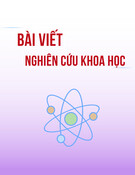




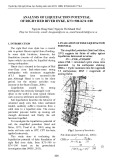
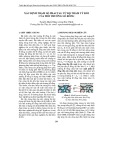

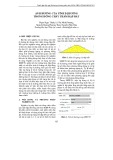
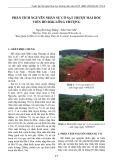










![Ô nhiễm không khí từ nông nghiệp: Thách thức toàn cầu và định hướng hành động [Mới nhất]](https://cdn.tailieu.vn/images/document/thumbnail/2025/20250917/kimphuong1001/135x160/52891758099584.jpg)




